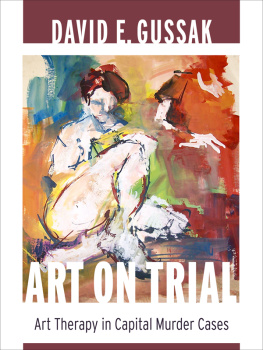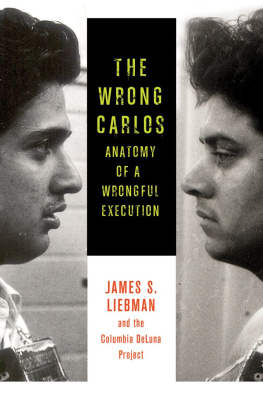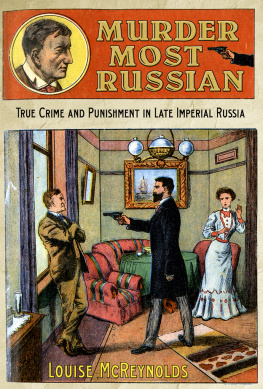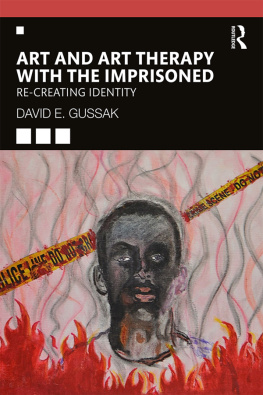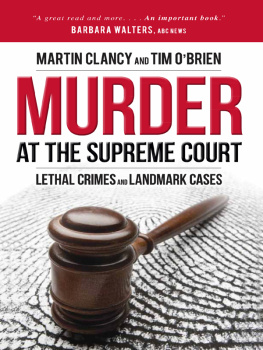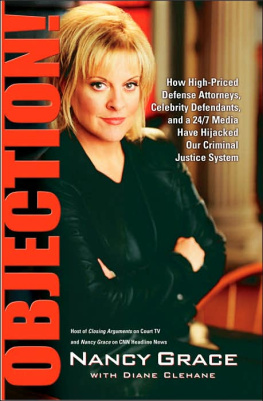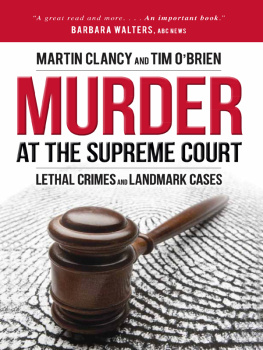ART ON TRIAL
David E. Gussak
ART ON TRIAL
Art Therapy in Capital Murder Cases
COLUMBIA UNIVERSITY PRESS NEW YORK
Columbia University Press
Publishers Since 1893
New York Chichester, West Sussex
cup.columbia.edu
Copyright 2013 Columbia University Press
All rights reserved
E-ISBN 978-0-231-53427-7
Library of Congress Cataloging-in-Publication Data
Gussak, David E.
Art on trial : art therapy in capital murder cases / David E. Gussak
pages cm
Includes bibliographical references.
ISBN 978-0-231-16250-0 (cloth : alk. paper)
ISBN 978-0-231-53427-7 (e-book)
1. Art therapy. 2. PrisonersMental health services. 3. Therapeutic communities. I. Title.
RC489.A7G87 2013
616.89'1656dc23
2012038918
A Columbia University Press E-book.
CUP would be pleased to hear about your reading experience with this e-book at .
Cover image: Kevin Ward
Cover design: Lisa Hamm
References to Web sites (URLs) were accurate at the time of writing. Neither the author nor Columbia University Press is responsible for URLs that may have expired or changed since the manuscript was prepared.
CONTENTS
A rt on Trial is about the crossroads of art therapy, criminology, and assessments and the involvement of art therapists in capital murder trials. Until now, there have been a few publications available about forensic art therapy that focus on work with children and families, exclusively in abuse or custodial cases. One area of the field that has never been addressed is the role that an art therapist can serve in criminal and capital murder trials. The impetus for this examination emerged from a professional experience.
THE IMPETUS
In the fall of 2006, I was contacted by a defense attorney in a state other than the one in which I live. She inquired if I could provide expert witness testimony on art created by a man, Kevin Ward, who was going to be tried for murder and attempted murder and for whom the prosecution was seeking the death penalty. I was contracted by the defense to testify that the large amount of art he had produced before, immediately after, and for several years following the crimes supported the claim that he was mentally ill when he committed the murder. The defense intended to use this strategy to prevent the state from putting the defendant to death.
One of the aims of this book is to explore how the defendants art was used as evidence to help the defense determine if, indeed, he had suffered from mental illness at the time of the crimes. That he had committed these acts was never refuted. It was the mental status of Kevin Ward at the time of the crimes that was in question. This was why I was called in.
The case never went to trial as the result of a plea bargain, in which Ward pleaded guilty in exchange for an agreement that he would not be executed. So the case culminated in a sentencing hearing in the summer of 2009 to determine the length of his incarceration. I was still expected to provide evidence, based on the content of his excessive creative output, that indicated he had a mental illness, in the hope of convincing the judge to impose a sentence of less than life. Despite the long prison term the defendant received95 years: 60 years for the murder of his elder child, and 35 years for the attempted murder of his younger childthe judge indicated that he did indeed suffer from a mental illness, based on the testimony of the expert witnesses given during the sentencing hearing.
This case has since been presented at various conferences and seminars. As expected, depending on the audience, questions and interest variedhowever, all the attendees have been fascinated by the case itself, the role of the art therapist, the legal procedures, and, of course, the art and the way its assessment supported the defense. Eventually, it became clear that the experience and outcome could be written as a journal article or book chapter. Manyart therapists and non-art therapists alikeencouraged the reporting of the case as they heard about the details of the proceedings.
Interestingly, the prosecuting attorney supported the recording and publishing of the case. During the deposition, which is presented in , the prosecutor and I half-jokingly talked about the work in this case eventually being published:
WILLIAMS: Have you published anything out of your work in this case at all at this point?
GUSSAK: In this case?
WILLIAMS: Yes.
GUSSAK: No.
WILLIAMS: Well, when can we look forward to that?
GUSSAK: Ill let you know. (Laughter)
When I contacted the prosecutor by e-mail 2 years later for an interview for this project, he answered, I did joke with you on the publication [of this case], but because of the newness of this application of your area of expertise, I fully expected it to happen. I am glad to hear that you are moving forward in this area.
As writing about the experience advanced, and as the comprehensive assessment of nearly 100 images was recorded, the focus of the project changed. There was too much information to be included in a chapter or an article. A colleague recommended that the account of the case would best be presented as a book.
As the case progressed, I underwent an interesting and intense form of doubt and reevaluation. After the attorneys agreed on a plea bargain, thereby avoiding a trial, I selfishly questioned the dramatic effect of such a publication. If there was no risk of the death penalty, what would be the point of offering this account? At this time, the focus of the intent of this publication began to solidify. Was this to be a book about the case, demonstrating a John Grishamlike dramatic tension, or was it about the value of art therapy in a court of law: the worth placed on such testimony and the detailed steps and copious information provided to demonstrate its effectiveness as evidence? What soon emerged was that despite its lack of drama and intrigue, this book was completed because of its nuance. This underscored what it would be aboutnot the defendant, but the art that was put on trial. Therefore, the structure of this book has been developed to provide an overview of art therapy and its application to the fields of forensics and psychology, a comprehensive and detailed description and assessment of the art presented during the hearing, and the particulars of its defense in court.
THE STRUCTURE OF THE BOOK
Following the introduction, this book is divided into three distinct parts:
Part I A comprehensive overview of the art in one case study and the final, conclusive assessment that emerged
Part II A defense of the art assessment
Part III An analysis and the implications of the case
The introduction provides the information necessary for those in the art therapy field to understand the legal and forensic context in which this art therapist found himself, and for those in the legal, forensic, criminology, and counseling fields to understand art therapy and art-based projective assessments. It offers an overview of art therapy, projective assessments, the tools used by art therapists to elicit information about their clients, and the distinct description and role of the forensic art therapist. Following is a brief exploration of the status criteria for expert witnesses. This chapter is crucial, since art therapy continues to be used in other professional arenas. All parties must develop a shared language and understanding in order to work cohesively.

